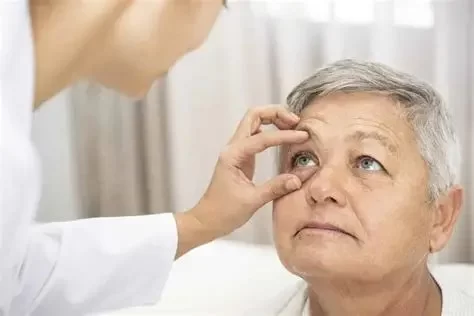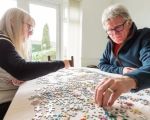
- why-eye-muscle-flexibility-matters-for-seniors
- common-signs-of-reduced-eye-muscle-flexibility
- daily-exercises-to-improve-eye-muscle-flexibility
- lifestyle-and-environmental-factors
- real-stories-and-professional-guidance
1. Why Eye Muscle Flexibility Matters for Seniors
As we age, many aspects of our physical health require extra attention—and vision is no exception. Learning how to improve eye muscle flexibility in seniors is more than a wellness trend; it’s a key component of maintaining independence, confidence, and quality of life. Flexible eye muscles help with activities like reading, driving, walking, and even social interaction, where eye contact plays a big role.
Reduced flexibility can lead to fatigue, headaches, slower reading, and problems with depth perception. For seniors, even small declines in ocular muscle function can affect safety and daily living. That’s why organizations like Eye Docs focus on prevention, not just treatment.
2. Common Signs of Reduced Eye Muscle Flexibility
2.1 Difficulty Shifting Focus
One early sign is trouble switching focus between near and far distances—for example, looking up from a book to see the television clearly. This is due to aging eye muscles becoming less responsive over time.
2.2 Frequent Eye Strain and Fatigue
If your eyes feel tired after short periods of reading or watching TV, it may not be about screen brightness—it could be muscle stiffness. Seniors often assume this is part of “normal aging,” but targeted attention can bring improvement.
2.3 Double Vision or Loss of Tracking
Some people notice their eyes don’t move smoothly together, especially when following moving objects. Misalignment or delayed tracking can indicate reduced flexibility in the muscles that control coordinated movement.
3. Daily Exercises to Improve Eye Muscle Flexibility
3.1 The "20-20-20" Rule
Every 20 minutes, look at something 20 feet away for at least 20 seconds. This simple practice relaxes the eye’s focusing muscles and prevents long-term stiffness—especially for seniors who spend time reading or using screens.
3.2 Pencil Push-Ups
Hold a pencil at arm’s length and slowly bring it toward your nose, keeping your eyes focused on the tip. Stop if you see double. This strengthens convergence (the ability to focus on close objects) and improves coordination.
3.3 Eye Circles and Directional Shifts
Move your eyes in a full circular motion—clockwise and counterclockwise—without moving your head. Then look up, down, left, and right, holding each direction for five seconds. These stretches improve the range of movement in all directions.
3.4 The Figure Eight Exercise
Imagine a large “8” lying on its side about 10 feet in front of you. Trace it with your eyes, slowly and steadily. This promotes flexibility and strengthens both horizontal and vertical eye motion.
4. Lifestyle and Environmental Factors
4.1 Proper Lighting and Contrast
Dim or uneven lighting makes your eyes work harder to focus. Well-lit environments with good contrast between objects and backgrounds ease eye strain and support healthy eye muscle function.
4.2 Hydration and Eye Health
Dry eyes make it harder for the muscles to function smoothly. Seniors should drink plenty of water and consider using eye drops or humidifiers if indoor air is dry. Consult with experts at Eye Docs for recommendations on eye-safe hydration strategies.
4.3 Nutrition for Ocular Support
Foods rich in lutein, zeaxanthin, and omega-3s can support overall eye health. Leafy greens, fatty fish, and carrots provide essential nutrients for maintaining muscle performance and reducing degeneration risk.
4.4 Sleep and Eye Muscle Recovery
Rest is essential. During sleep, your eyes heal and restore balance. Seniors often struggle with sleep quality, but improving rest cycles can significantly reduce daytime eye fatigue and stiffness.
5. Real Stories and Professional Guidance
5.1 Eleanor’s Progress at Age 74
Eleanor, a retired schoolteacher, noticed she was squinting and rubbing her eyes more often after afternoon crossword puzzles. Her optometrist recommended gentle eye exercises and regular breaks. After three months of doing figure-eight drills and improving her lighting at home, her headaches faded and reading became enjoyable again.
5.2 Working with Eye Care Professionals
Every person’s visual system is different. If exercises don’t seem effective or cause discomfort, consult with a specialist. At Eye Docs, personalized assessments and guidance help seniors build a sustainable routine tailored to their needs.
5.3 Avoiding Overcorrection or Overuse
Like any muscle, overworking the eye can cause strain. It's important to balance exercises with relaxation techniques, such as palming (resting warm hands gently over closed eyes), especially for seniors just beginning eye wellness routines.








